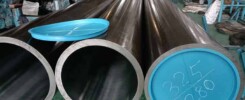The chrome plated piston rod is an important component used for mechanical piston movement. Since the frequency of piston movement is very high, the quality requirements of this part are very high. After the piston rod is chrome-plated, it can provide its hardness and service life. The following is a brief introduction to the basic requirements of chrome-plated piston rods.
Basic requirements for chrome-plated piston rods:
1. It must have sufficient strength, rigidity and stability;
2. Good wear resistance, high processing accuracy and surface roughness requirements;
3. In terms of structure, minimize the influence of stress concentration;
4. Ensure a stable connection and prevent loosening;
5. The design of the piston rod structure should facilitate the disassembly and assembly of the piston.
So how to choose a high-quality chrome plated piston rod?
1. Material
This material is the main raw material for manufacturing cylinder and oil cylinder piston rods, so we can choose high-quality chrome-plated piston rods according to the quality of the materials used. DATONG GROUP produces high-quality CK45/4140 chrome-plated rods.
2. Hardness
Hardness mainly refers to the ability of a material to resist hard objects pressing into its surface. However, the harder the hardness, the better, the hardness should be appropriate. Because only with proper hardness can the quality of the product be guaranteed.
3. Straightness
High-quality chrome-plated piston rods also attach great importance to their straightness requirements, because straightness is an important place for guidance.
4. Chrome plating layer
The chrome plating layer of high-quality chrome-plated rods will usually reach more than 0.22 mm, because the use of optical axis piston rods of this thickness is very effective.
Chromeplated rods are mainly used for hydraulic pneumatics, construction machinery, automobile manufacturing piston rods, guide columns of plastic machinery, packaging machinery, printing machinery rollers, textile machinery, conveying machinery shafts, linear optical shafts, etc.

